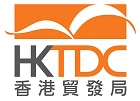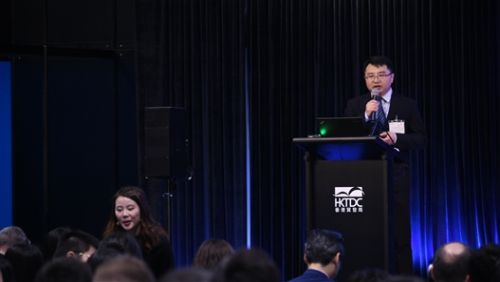|
| Monday, 8 April 2019, 19:30 HKT/SGT | |
| |  | |
Source: HKTDC | |
|
|
|
|
| Experts discuss applications and examples of smart lighting |
HONG KONG, Apr 8, 2019 - (ACN Newswire) - Lighting industry innovators discussed the recent history, latest innovations, and present and future trends in the global smart lighting market in the Innovation in Smart Lighting Forum on the first day of the HKTDC Hong Kong International Lighting Fair (Spring Edition) on Saturday (6 April).
 | | Figo Wang, Chief Research Analyst/Research Director, LEDinside, TrendForce Corp. |
The market outlook from the supply-side perspective is pessimistic because of an overheated market, according to Figo Wang, Chief Research Analyst and Research Director at LEDinside, TrendForce Corp. But the commoditised MOCVD market in China is a game changer, he said, because of much lower costs and much faster delivery times from Chinese producers, which are slashing the earnings and market share of the traditional big players, but providing users with great opportunities. The market, until very recently, was dominated by two companies, one American and one German; but the recent entry of Chinese producers has resulted in both prices and delivery times being cut in half. In China's large domestic market, Chinese suppliers had a market share of 47% in 2016, but this rose to 69% in 2018. With the supply increase, some upstream companies will lose money, said Mr Wang, but equilibrium will soon return to the market. The new pricing strategy of Chinese producers meant there was no more price discrimination against small companies, he said, so more companies can afford MOCVD, lowering the entry barrier.
On the demand side, the LED market was maturing, he explained. The lighting segment was the largest market for the LED industry, but the growth rate of this segment is insignificant. The micro and mini LED segments are growing, but they are facing a supply shortage. TrendForce's analysis of Chinese lighting and luminaire exports shows that they have been falling since 2015 because of the strong RMB and US tariffs - since the US is a US$8 billion market. Exports to the US shot up in October and November because of the tariff uncertainty, but have fallen in recent months, he said.
LED lighting continues to replace grey lighting, said Mr Wang, and is growing 2-3% per year. But inventory is also continuing to grow every year, which will be a challenge for the LED lighting market. In the medium-to-long run, higher prices attract more participants, but this in turn, leads to more competition and lower prices. Since demand is peaking and technology is advancing so quickly, there will be pain in the manufacturing segment, he predicted, but the survivors will benefit. "Smart lighting will add value and help increase demand," he concluded. "Market demand will be driven by innovation."
"The future of facade lighting must have a goal," said Simon McCartney, co-founder of Illumination Physics (IP), "which involves its total integration with the architecture." The inhibitors are globalised products and standardisation, which in effect force architects to adapt their creations to the lighting fixtures available, he said. The company, however, believes in the opposite approach, meaning it is the job of lighting specialists such as IP to adapt their lighting products to the architect's creation and to provide "exactly what is required for each application."
The LED revolution began inauspiciously with spurious claims, said Mr McCartney, but allowed his company to create a beautiful and unique night atmosphere by providing exactly what is required for each application. He emphasised the changes with pictures of HSBC headquarters building, from dull in 2003 with wash lights and direct lighting to dynamic in 2018 with a vast multimedia wall.
Mr McCartney reviewed six case studies in Hong Kong, Macao, Singapore and Cyprus to show the ways in which IP adapted LED lighting to building design. In the facade design for the HSBC Main Building in Hong Kong to celebrate the bank's 150th anniversary, for example, IP replaced the halo lighting on the facade with LED lighting, using thin strip LEDs inside the wall, which are invisible from the outside during the day. The content is legible from a distance of 100-3,000 metres. HSBC can now use the media wall for marketing and branding, but its main function is to form an integral part of Hong Kong's 'A Symphony of Lights' lightshow. As a bonus, "the use of LED lighting reduced energy use by about 80%," said Mr McCartney.
Lighting Evolution
Lighting and mobile phones share an analogous evolution, explained Tjaco Middel, Head of R&D for Asia Pacific of Austrian company Tridonic, a leading global provider of smart and efficient lighting solutions. The original mobile phone was designed to do only two things - phone and text - but since it became connected to the internet, almost anything is possible. Similarly, lighting provides a basic function, but when connected to the internet, the possibilities are endless. Just three years ago, the focus of LED lighting changed from just LEDs and energy savings to controls, explained Mr Middel, because controls allow new business opportunities, such as smart lighting and more beautiful buildings. Now the mobile phone can be used to control light, but this just makes it a remote-control device. "It must be connected to the internet to be great," he said.
Tridonic's DALI standard is the most common way of connecting lighting to the internet in Europe. But controls are also needed to connect lighting to the net, he explained. The lighting in a building must be connected at every light point for intelligent lighting control. Mr Middel reviewed some of the myriad benefits of connected lighting:
* Connected lighting can provide an energy dashboard, monitoring energy use in the building. In the future, it will be difficult to comply with green building certification requirements without intelligent lighting.
* Intelligent lighting can provide occupancy reports, allowing store management to identify high-traffic spots to put high-profit products there. It can allow building management to optimise building usability and occupancy. And it can even allow companies to use parking spaces more efficiently by integrating shared spots into the lighting system, allowing the company to make money from underused parking spaces or get more space for employees.
* Connected lighting allows remote commissioning. Since 80% of a building's costs are operational, remotely commissioning lighting can reduce operational costs.
* With intelligent lighting, the software systems can be updated, future-proofing the lighting system. "If the software can be updated, the luminaires will last much longer," he said.
Bluetooth innovation
Bluetooth SIG is a global community of over 30,000 companies with the common goal of driving innovation in the vast and growing range of connected devices, including luminaires, through common technical standards, explained Kai Ren, Developer Relations Manager, APAC, Bluetooth SIG. Its three main responsibilities are to expand the capabilities of Bluetooth technology by creating new and improved specifications; establish qualifications to drive Bluetooth interoperability; and promote and develop the Bluetooth brand globally.
One of the main reasons for Bluetooth's global popularity, said Mr Ren, is that it provides developers with complete wireless connectivity solutions. Some examples include:
* Audio streaming through point-to-point network topology, for wireless headsets, speakers and in-car infotainment;
* Optimised, very low-power data transfer, using point-to-point topology, which is commonly used in sports and fitness tracking devices, and health and wellness devices;
* Location services, including proximity solutions for point-of-interest information, navigation, and indoor positioning systems used for wayfinding where there is no access to GPS, such as in a subway train station; and
* Device networks for control, monitoring and automation systems, where many devices need to communicate with one another.
Mr Ren also discussed Bluetooth's new direction-finding capability, as it has great potential for smart lighting devices, which can be used as signal sending and receiving devices in warehouses, for example, to provide location accuracy down to centimetre-level.
The Hong Kong International Lighting Fair (Spring Edition) is organised by the Hong Kong Trade Development Council (HKTDC) and runs at the Hong Kong Convention and Exhibition Centre until 9 April 2019.
Fair Websites: www.hktdc.com/hklightingfairse/tc
Photo Download: https://bit.ly/2Kfgu7H
Contact:
Iris Chow, Tel: +852 2584 4525, Email: iris.cc.chow@hktdc.org
Katherine Chan, Tel: +852 2584 4357, Email: katherine.cm.chan@hktdc.org
Topic: Trade Show or Conference
Source: HKTDC
Sectors: Electronics, Construct, Engineering
https://www.acnnewswire.com
From the Asia Corporate News Network
Copyright © 2025 ACN Newswire. All rights reserved. A division of Asia Corporate News Network.
|
|
|
|

|
|
|
|